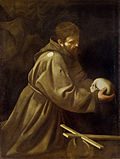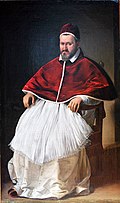Works
- Caravaggio
- Death of the Virgin (1604-1606)
- Madonna di Loreto (1604-1606)
- Mary Magdalen in Ecstasy
- Portrait of Pope Paul V (1605-1606)
- Saint Francis in Prayer
- Saint Jerome Writing
- Supper at Emmaus (Pinacoteca di Brera, Milan)
- John de Critz (attrib.) – James VI and I (approximate date)
- Frans Francken the Younger – The Witches' Sabbath
- Peter Paul Rubens
- The Judgement of Paris (approximate date)
- Portraits of






